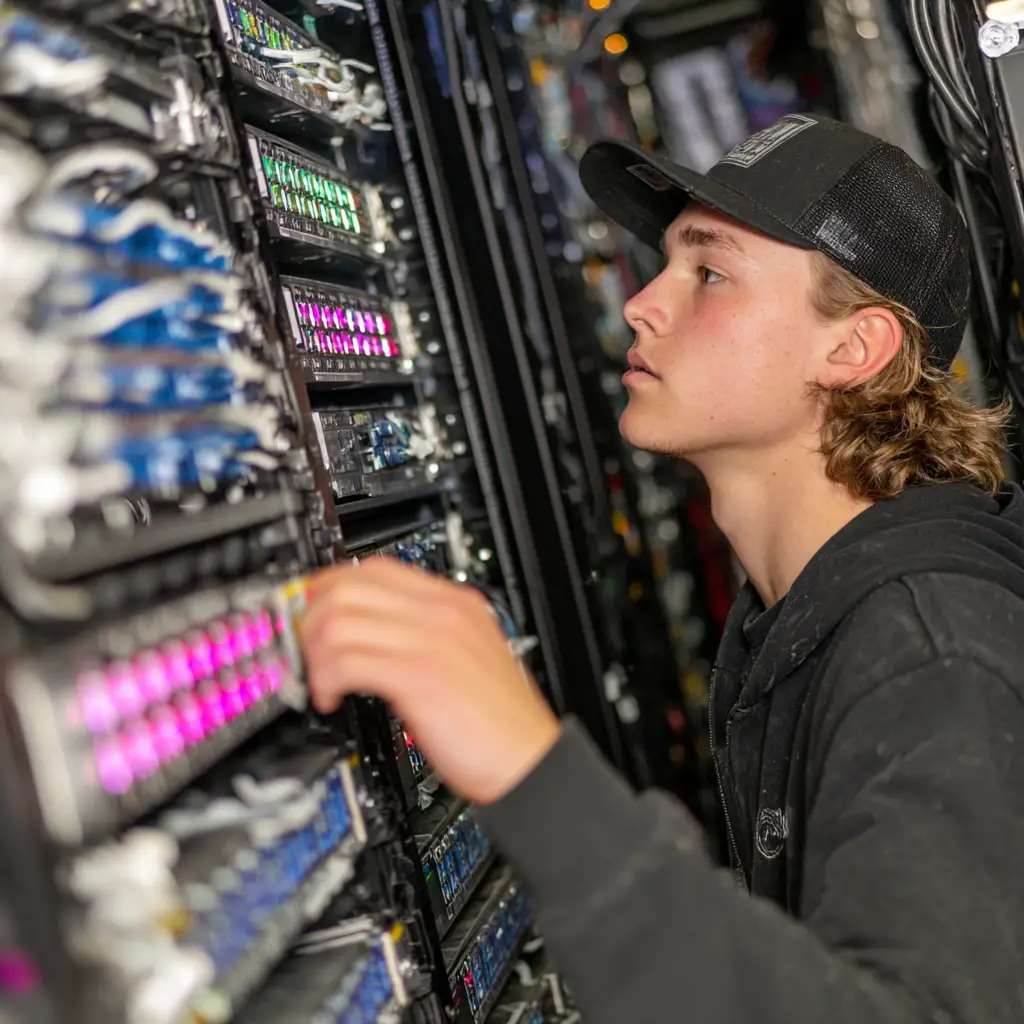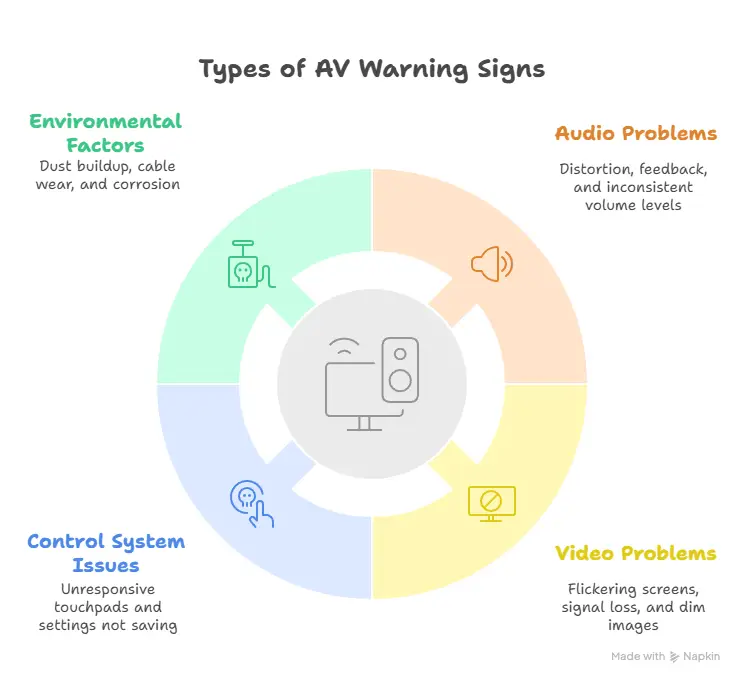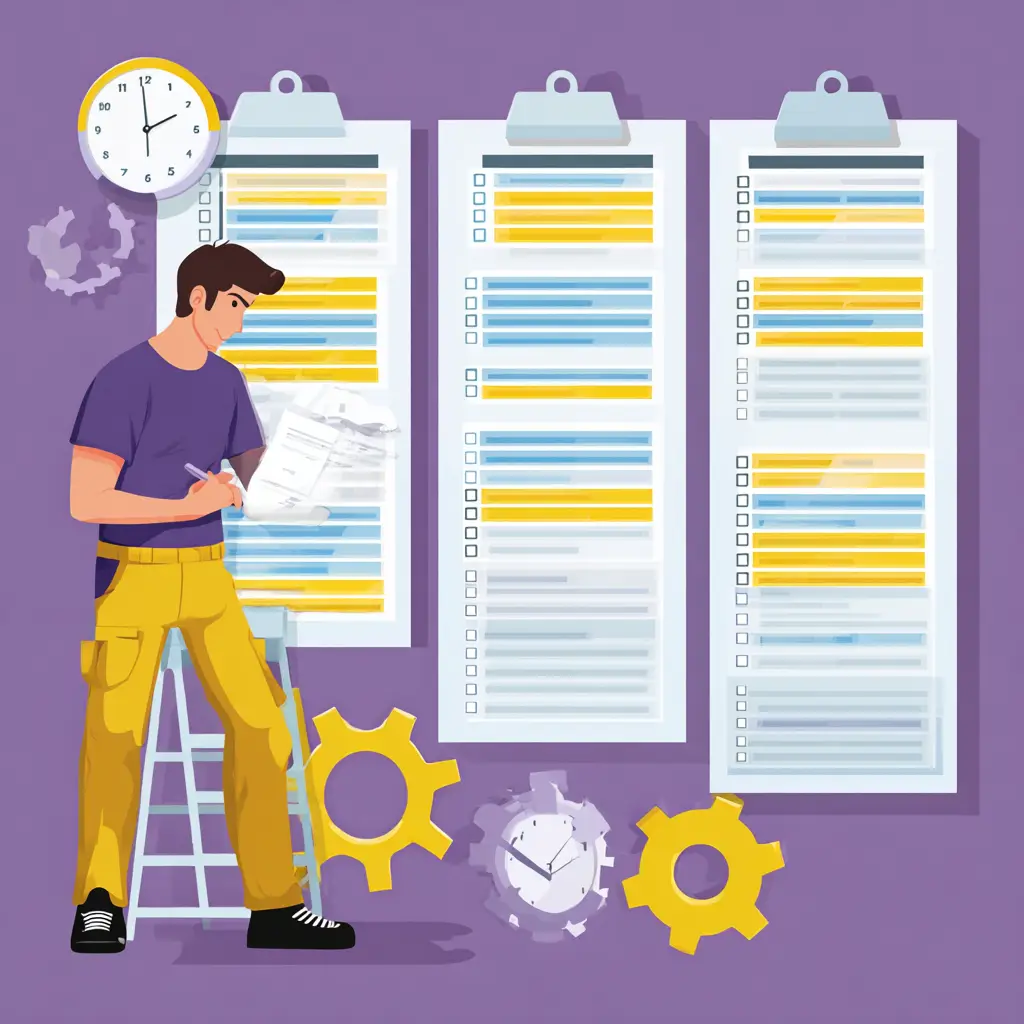
You wouldn't skip oil changes and expect your car to run forever. You schedule HVAC tune-ups to avoid emergency breakdowns. So why do so many churches and businesses treat their AV systems like they'll maintain themselves?
The answer is simple: most people don't realize their audio visual equipment needs regular care. Unlike a car that makes noise when something's wrong, AV systems often degrade quietly. By the time you notice problems during Sunday service or that important presentation, damage has already been done.
Proper audio visual maintenance protects your investment, prevents embarrassing failures, and keeps your communication technology working when it matters most. Here's everything you need to know about maintaining your AV system.
What Audio Visual Maintenance Actually Involves
Audio visual maintenance covers everything from routine cleaning to complex system optimization. Think of it as a spectrum that ranges from simple preventive care to emergency repairs when things go wrong.
Your AV system includes multiple components that all need attention:
- Microphones and wireless receivers
- Speakers and amplifiers
- Mixing boards and processors
- Projectors and displays
- Cameras and recording equipment
- Control panels and touchscreens
- All connecting cables and power systems
Each piece has different maintenance requirements, but they all work together as an integrated whole.
Why AV Systems Are Different
Unlike typical office equipment, AV systems coordinate multiple functions simultaneously. When one component starts failing, it affects everything else:
- A dusty projector lens creates dim images AND makes the projector work harder
- Loose audio connections cause intermittent sound AND create electrical resistance that damages amplifiers
- Poor cable management leads to signal loss AND creates safety hazards
Professional AV maintenance follows established industry standards that ensure optimal performance over the equipment's intended lifespan. These standards recognize that audiovisual equipment operates in demanding environments where failure disrupts communication, worship, and business operations.
The key difference is integration complexity. Your HVAC system has one job. Your AV system coordinates audio, video, control, and network functions all at once.
Preventive Maintenance vs. Emergency Repairs
Here's the reality most organizations learn the hard way: emergency AV repairs cost three to five times more than preventive maintenance.
And that's just the direct costs, before you factor in:
- Disrupted services and events
- Lost productivity during downtime
- Damaged professional reputation
- Rush shipping for replacement equipment
What Preventive AV Maintenance Includes
Regular tasks that prevent problems:
- Cleaning dust and debris from equipment
- Testing connections and signal quality
- Software updates and security patches
- Calibration checks for optimal performance
- Performance optimization and adjustments
These routine inspections identify small issues before they become big problems. A loose cable connection found during maintenance takes five minutes to fix. The same connection discovered when your sound system fails during a wedding ceremony requires emergency service, equipment replacement, and many apologies.
The Real Cost of Skipping Maintenance
Consider this real example: A church delayed their annual AV maintenance to save money. Six months later, their main amplifier failed during Easter service because dust had clogged the cooling system.
- Emergency replacement cost: $3,200
- Skipped maintenance would have cost: $400
The oil change principle applies perfectly to AV systems: pay a little now, or pay a lot later.
Smart organizations budget for AV maintenance like any other critical infrastructure because when communication technology fails, everything else stops working too.

Signs Your AV System Needs Attention
Important principle: Ideally, AV maintenance is done BEFORE you see these signs. But these are things to look for.
Audio Warning Signs
- Distortion or crackling sounds
- Feedback issues that weren't there before
- Inconsistent volume levels
- Microphones cutting in and out
- Sound quality that varies from week to week
These usually indicate loose connections, dirty contacts, or components operating outside specifications.
Video Display Problems
- Flickering screens or color shifts
- Signal loss or "no signal" messages
- Projectors showing dim images or color spots
- Displays taking longer to warm up
- Random connectivity issues
These symptoms often point to lamp aging, dust accumulation, or cable degradation.
Control System Issues
- Unresponsive touchpads or buttons
- Settings that don't save properly
- Systems requiring frequent rebooting
- Lighting or audio presets that drift
- Slow response to commands
Modern AV systems rely heavily on software and need regular updates like any computer system.
Environmental Factors
Often overlooked but critical:
- Dust buildup blocking ventilation
- Cable wear from repeated setup/breakdown
- Corrosion on connectors from humidity
- Equipment running warmer than usual
Don't ignore these warning signs. Each symptom indicates stress on your system. Conference room troubleshooting becomes necessary when routine maintenance gets delayed, but catching problems early prevents expensive repairs.
The goal: Recognize patterns before they disrupt important events. By the time problems are obvious, your system has been struggling for weeks or months.
DIY Maintenance Tasks vs. Professional Services
Understanding what you can safely handle versus what requires expertise protects your equipment and keeps everyone safe.
Safe DIY Maintenance Tasks
Basic cleaning and inspections you can handle:
- Dust displays, projectors, and equipment surfaces
- Organize cables to prevent damage
- Check for loose connections you can see
- Test basic functions (power, volume, display connections)
- Update software with clear manufacturer instructions
- Clean accessible air vents and replace obvious filters
Monthly visual inspections help catch problems early:
- Look for frayed cables or loose mounting
- Check for equipment showing overheating signs
- Note any performance changes
- Document unusual sounds or behaviors
Professional Services Required
Technical work that needs qualified technicians:
- System calibration using specialized calibration tools
- Audio level optimization and sound tuning
- Color accuracy adjustments for displays
- Control system programming and updates
- Electrical work involving power connections
- Proper power management system installation
Complex diagnostic work includes:
- Identifying intermittent signal loss issues
- Measuring signal quality with professional equipment
- Optimizing system performance beyond basic settings
- Warranty-sensitive repairs that void coverage if done incorrectly
Industry certification programs ensure technicians have proper training for safe, effective AV system maintenance. Certified professionals understand manufacturer specifications, safety requirements, and integration complexities.
The Simple Rule
If you're not completely confident about a maintenance task, call professionals. The cost of expert service is always less than accidentally damaged equipment or safety incidents.

Creating an AV Maintenance Schedule
Effective audiovisual maintenance follows a regular schedule that prevents problems before they start. Like changing your car's oil every 5,000 miles, AV maintenance works best when performed consistently.
Monthly Tasks (Basic Care)
Anyone can handle these routine inspections:
- Clean dust from displays and equipment
- Organize cables and check for damage
- Test basic system functions
- Note performance changes
- Update software when prompted
Quarterly Tasks (Deeper Maintenance)
More thorough system health checks:
- Clean equipment air vents thoroughly
- Check all visible connections for tightness
- Test backup systems and emergency procedures
- Verify control settings haven't drifted
- Inspect for corrosion or wear patterns
Annual Professional Maintenance
Comprehensive optimization for optimal performance:
- Audio calibration using professional calibration tools
- Video display optimization and color correction
- Firmware updates and security patches
- Diagnostic testing with specialized equipment
- Internal component inspection and cleaning
- Proper power management system evaluation
Documentation Is Key
Simple maintenance logs help identify patterns:
- Record dates and tasks performed
- Note unusual observations
- Track performance changes over time
- Provide valuable information for professional service
Pro Tip: Document everything you do and notice. This information becomes invaluable when professional service is needed.
Professional maintenance services can customize schedules based on your equipment, usage patterns, and budget. Heavy-use systems need more frequent attention, and mission-critical applications justify comprehensive maintenance programs.
When to Call the Professionals
Some situations require immediate professional attention, regardless of your maintenance schedule.
Immediate Professional Attention Required
Safety-related issues:
- Any electrical problems or burning smells
- Equipment feeling unusually hot
- Sparks or unusual sounds from equipment
Don't attempt troubleshooting when safety might be compromised.
Complex Problems Needing Expert Diagnosis
Call professionals for:
- Intermittent issues you can't reproduce consistently
- Signal loss problems that seem random
- Performance degradation affecting operations
- Systems working "most of the time" but failing unpredictably
Professional diagnostic equipment can identify root causes that aren't obvious during basic troubleshooting.
Choosing Quality AV Maintenance Providers
Ask about:
- Experience with your specific equipment brands
- Relevant certifications and insurance coverage
- References from similar organizations
- Response times for emergency calls
- Proper power management expertise
Budget Considerations:
- Treat professional maintenance as operational expense, not emergency cost
- Service contracts often provide better value than individual calls
- Priority response and predictable annual costs
- Regular professional attention prevents emergency situations
Quality providers offer comprehensive service agreements that include routine inspections, priority response, and predictable costs while ensuring optimal performance year-round.
Protecting Your AV Investment
Audio visual maintenance protects a significant investment in communication technology. Proper care extends equipment life, prevents costly failures, and ensures reliable performance when your system matters most.
Key Principles for Success
The maintenance fundamentals:
- Clean regularly and inspect consistently
- Address problems promptly before they escalate
- Use qualified professionals for complex work
- Document everything for pattern recognition
Organizations following these guidelines report:
- Fewer emergency repairs and service calls
- Longer equipment life and better ROI
- More reliable performance during critical events
- Lower total cost of ownership
Ready to Get Started?
Whether your AV system supports worship services, business presentations, or educational programs, regular maintenance keeps communication technology working effectively. The small investment in preventive care prevents large costs and disruptions from emergency repairs.
Bottom Line: Proper maintenance turns your AV system from a potential liability into a reliable asset that supports your organization's mission.
Ready to develop a maintenance plan for your AV system? Contact us for a consultation that evaluates your current equipment, identifies maintenance priorities, and creates a schedule that protects your investment while fitting your budget and operational requirements.
RYGID AV | 122 Backstretch Ln., Mooresville, NC 28117
(980) 263-9194| info@rygidav.com
Where to Contact + Connect with RYGID AV
Mooresville, NC 28117

.webp)